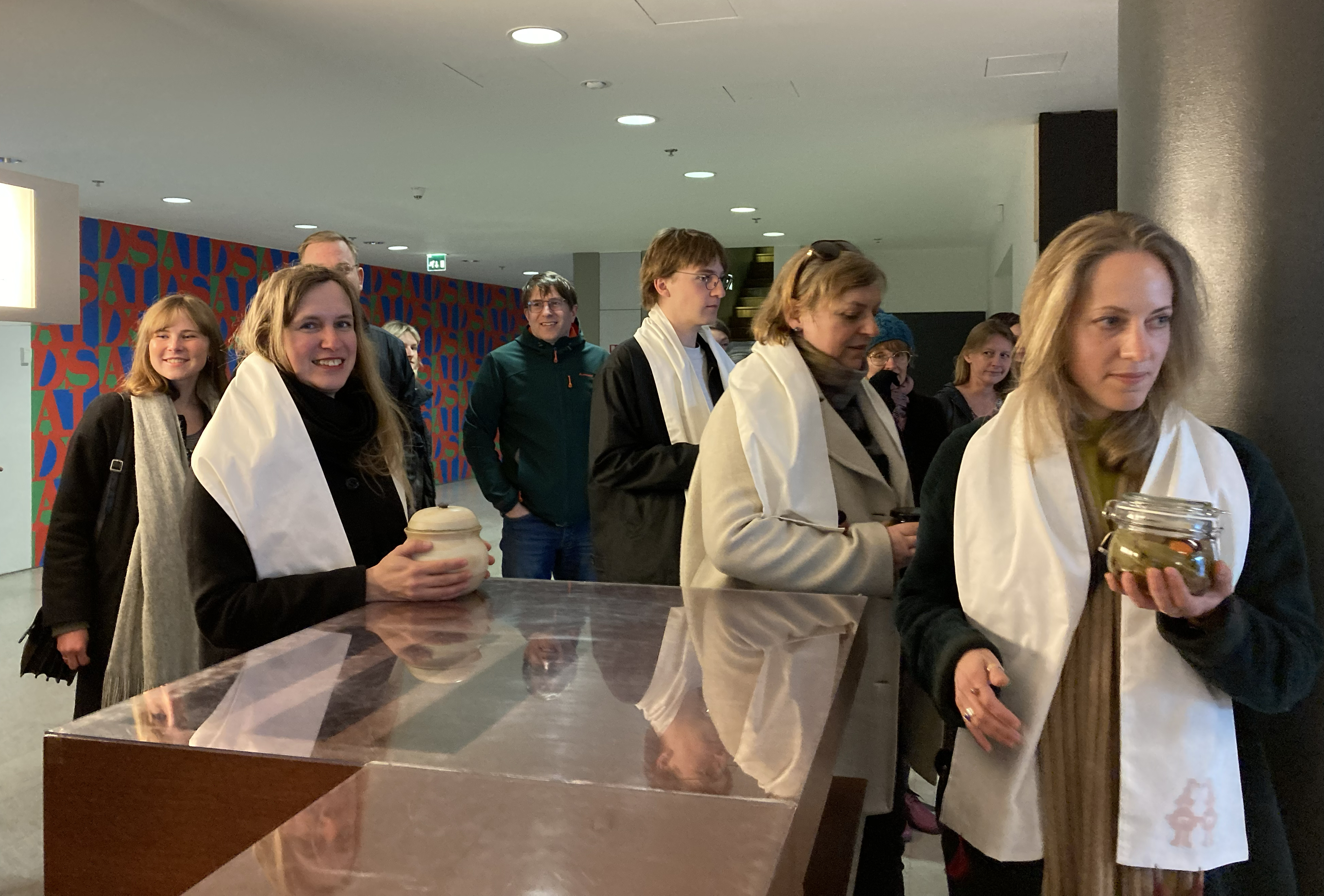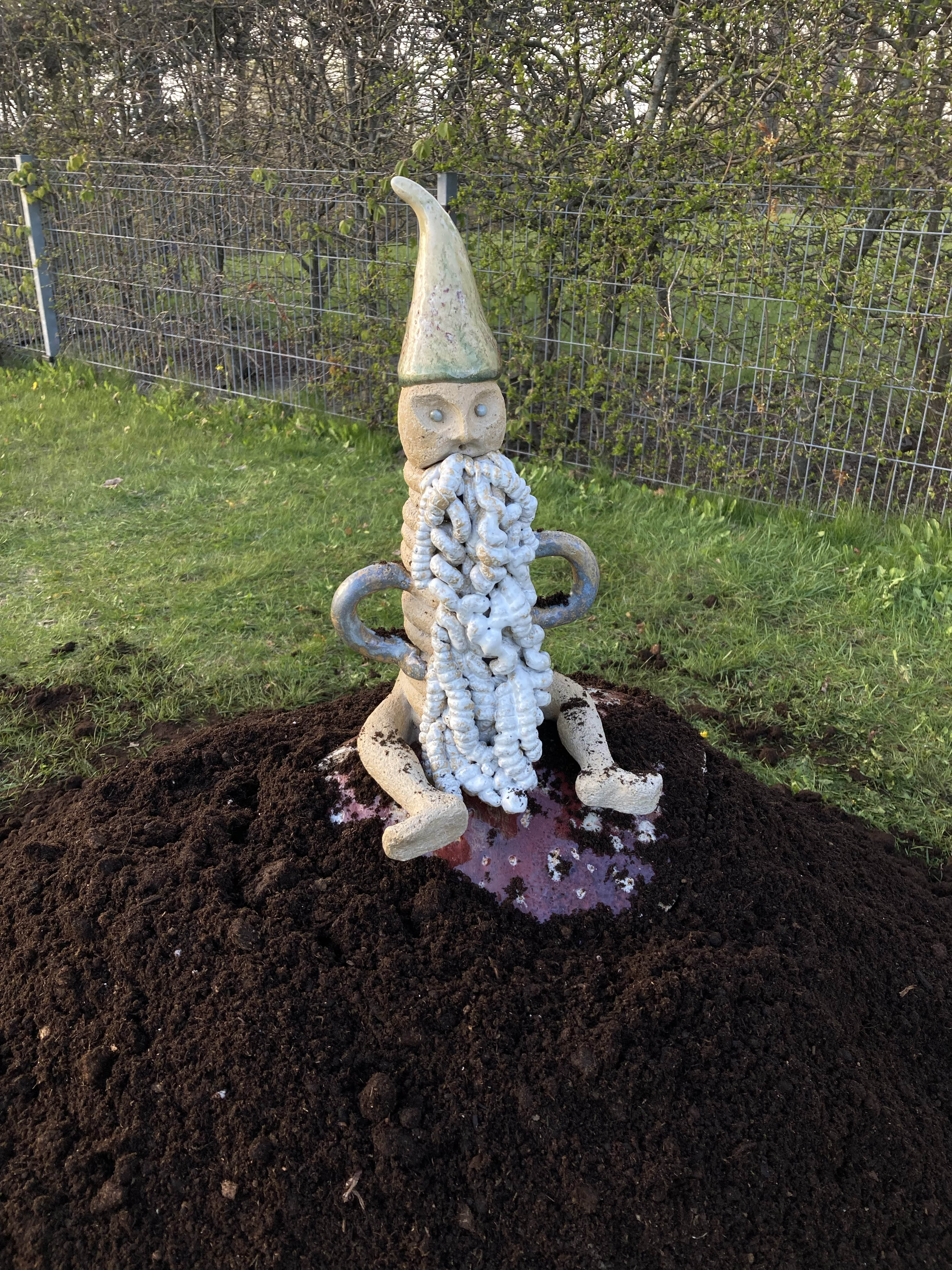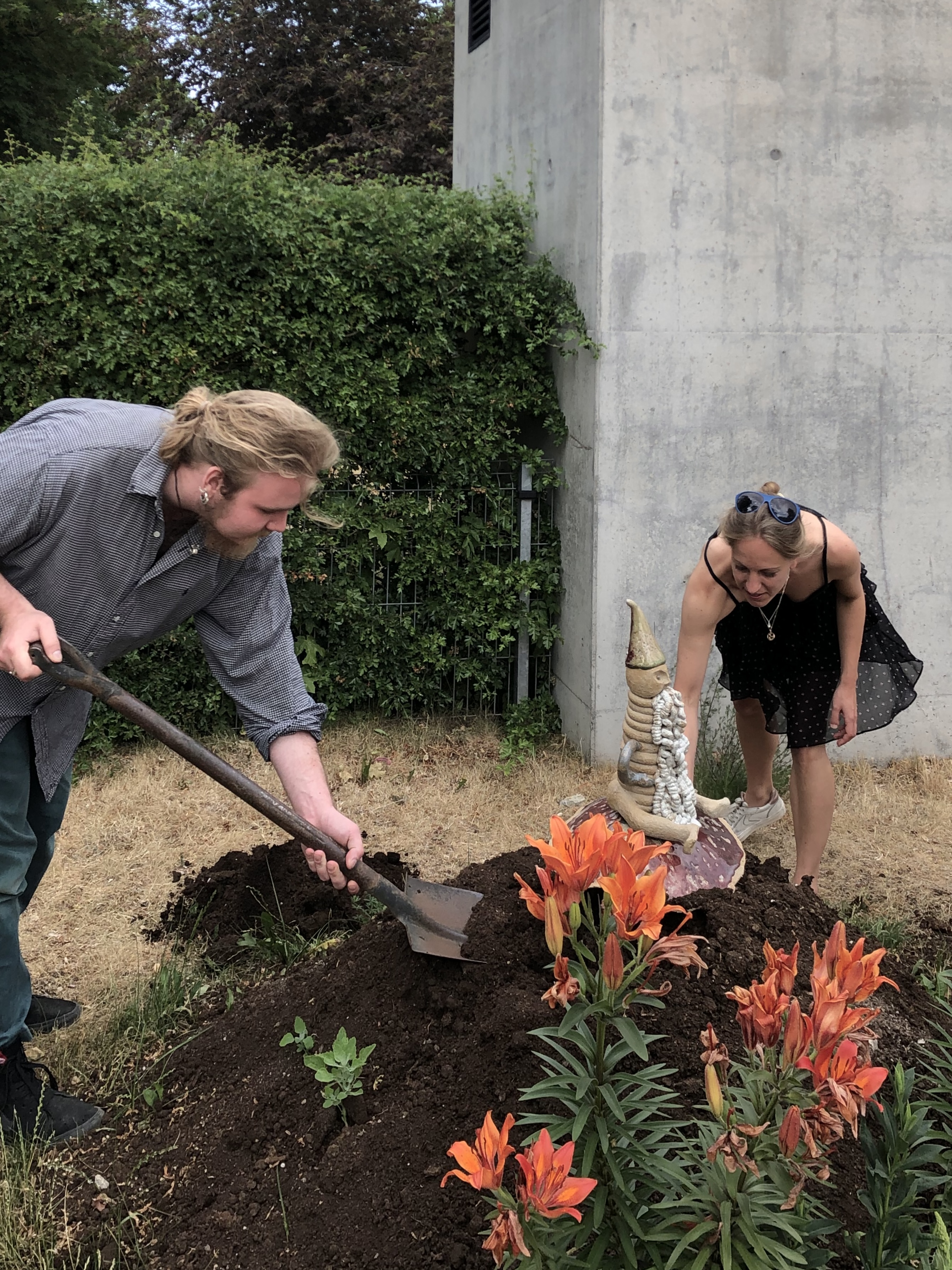





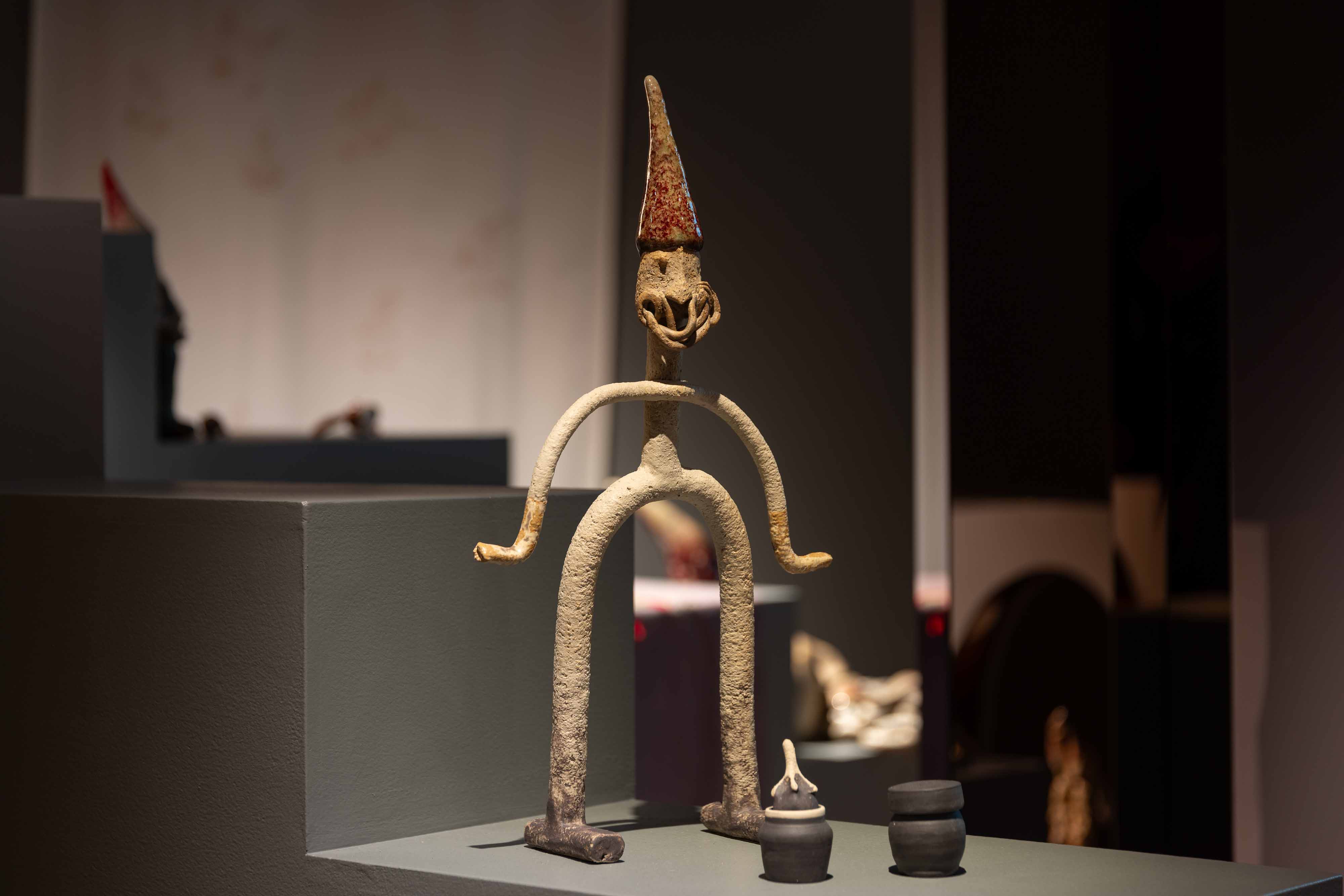
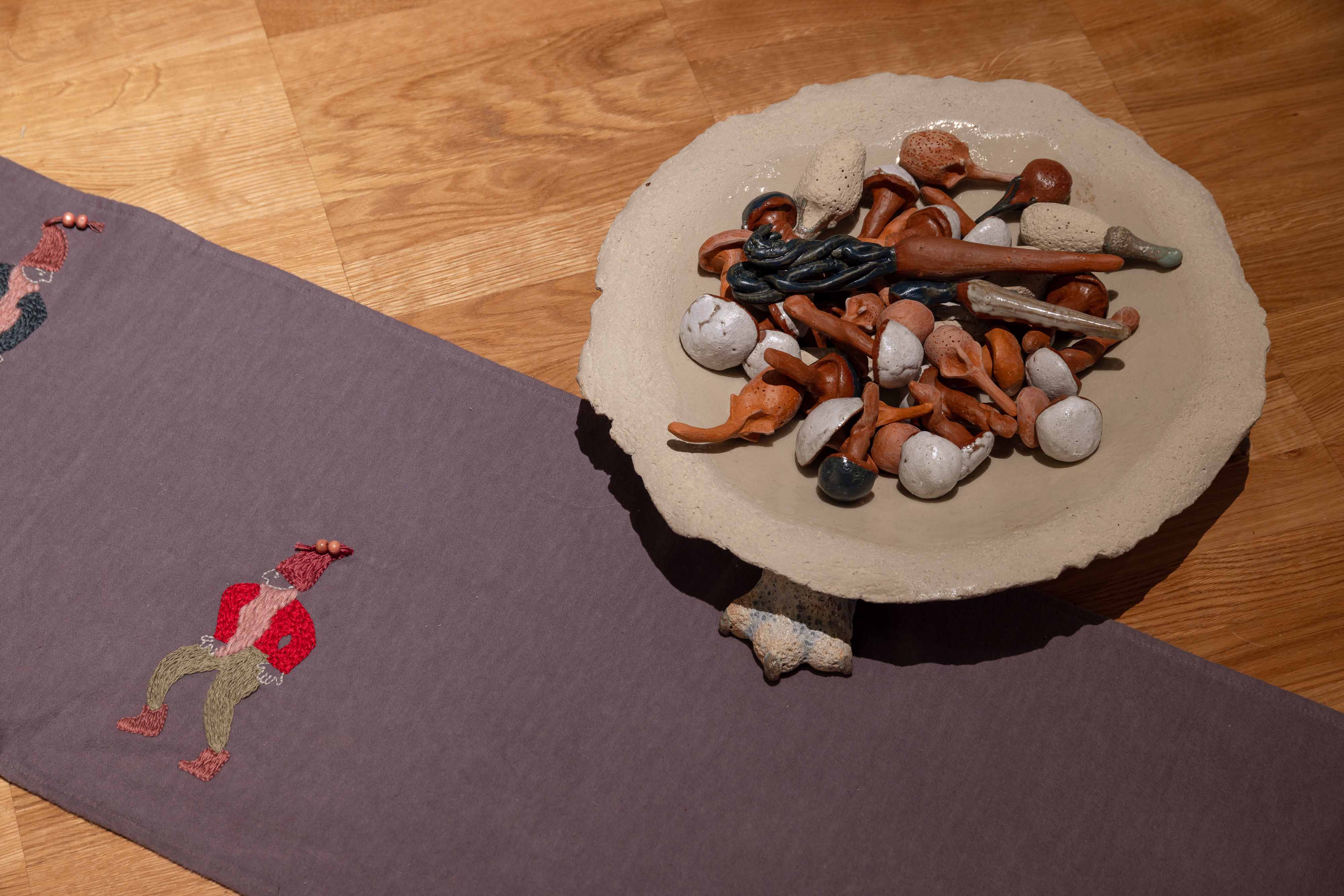
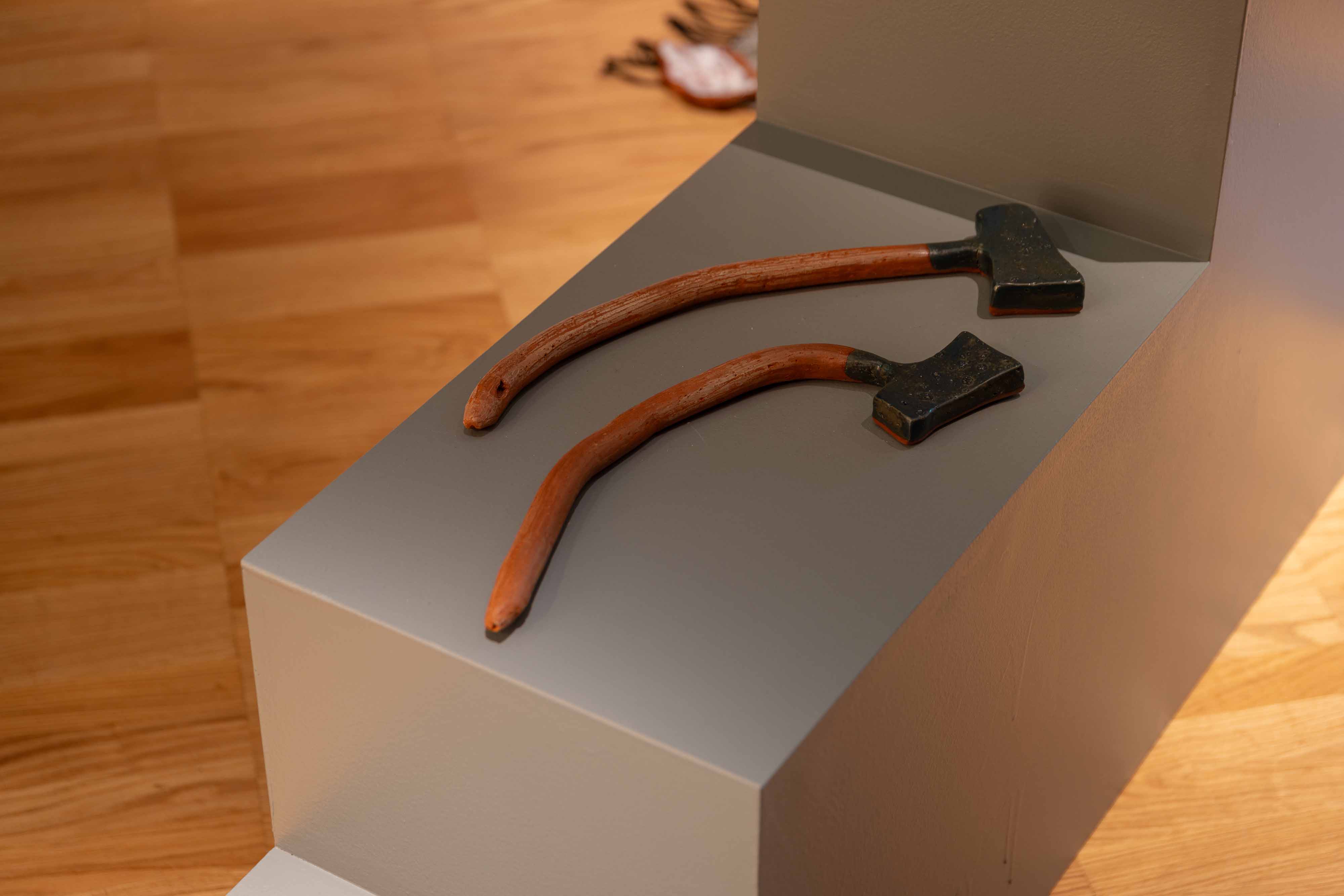
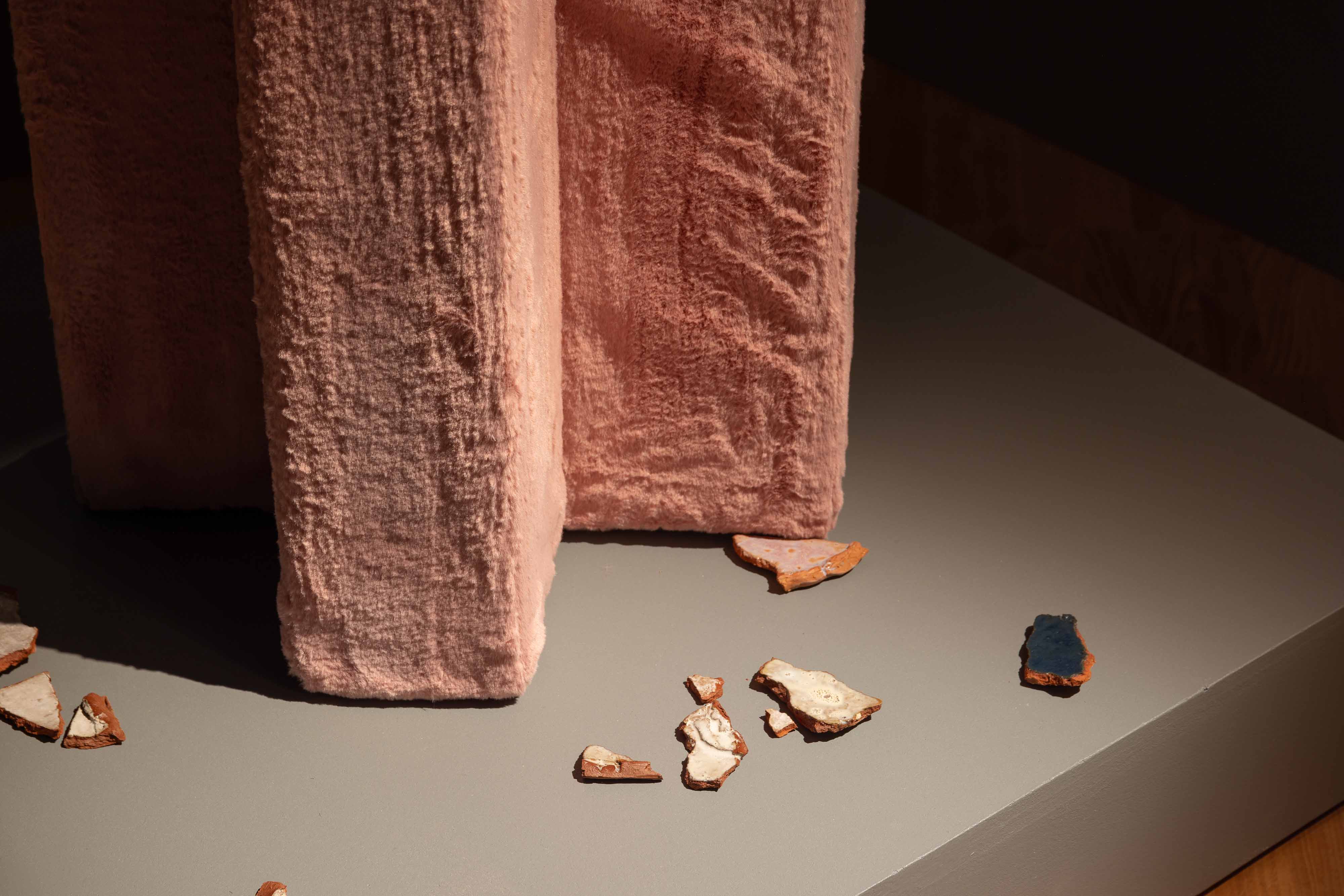
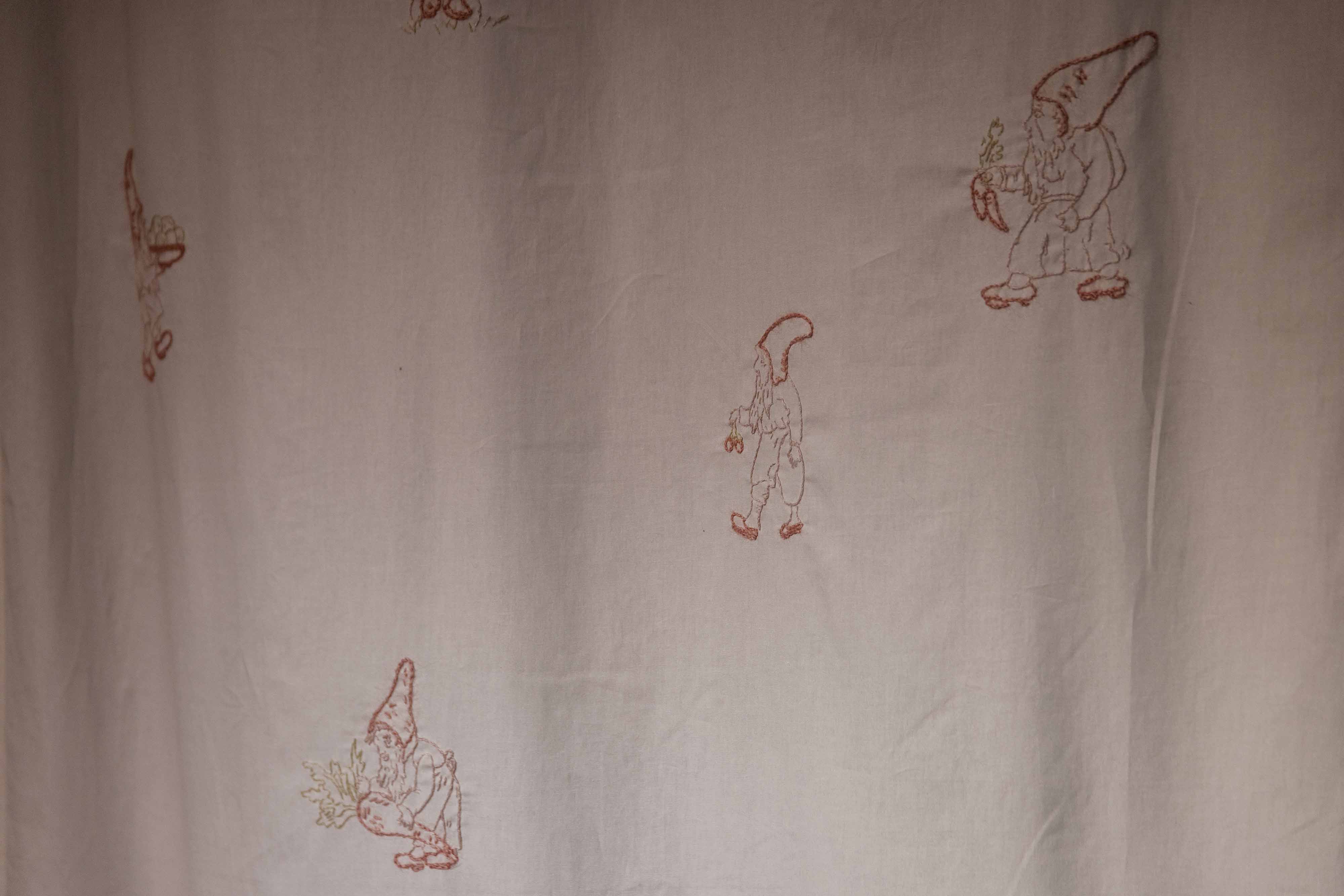
WAITING FOR GEOLOGICAL TIME
at KUMU Art Museum, Tallinn, Estonia
On View: 5 May 2023 → 8 October 2023
Commissioned by KUMU Art Museum for “Art in the Age of the Anthropocene”.
The largest-ever exhibition to focus on the relationship between art and the environment in Estonia is centred around three themes: rethinking Estonian art history from an eco-critical perspective, the possibilities of contemporary art in coping with the environmental crisis, and the “green museum”. At the centre of the exhibition is the question: is art possible and needed during an environmental crisis?
Curators: Linda Kaljundi, Eha Komissarov, Ulrike Plath, Bart Pushaw and Tiiu Saadoja
→ Public Performance Programme with wild fermented food
Site-specific installation: stone and earthenware ceramics, nettle fabric, handwoven textileswith sheep and dog yarn, fermented foods, recycled wood, acrylic and faux fur
“Waiting for geological time” takes its point of departure from the architecture of burial sites, caves, tombs, and temples. Two large modular pillars presiding over a cross shaped stairway host an arrangement of ceramic vessels for food preserving, figurines, woven and embroidered textiles. Behind the structure are two long textile banners ready to be worn as blankets on a carriage ride.The motif of the garden gnome permeates throughout the installation. They depict the need to minimize or “dwarf” the human impact and are guiding us the way to a lucky anti-anthropocene, where the human has minimized its footprint.

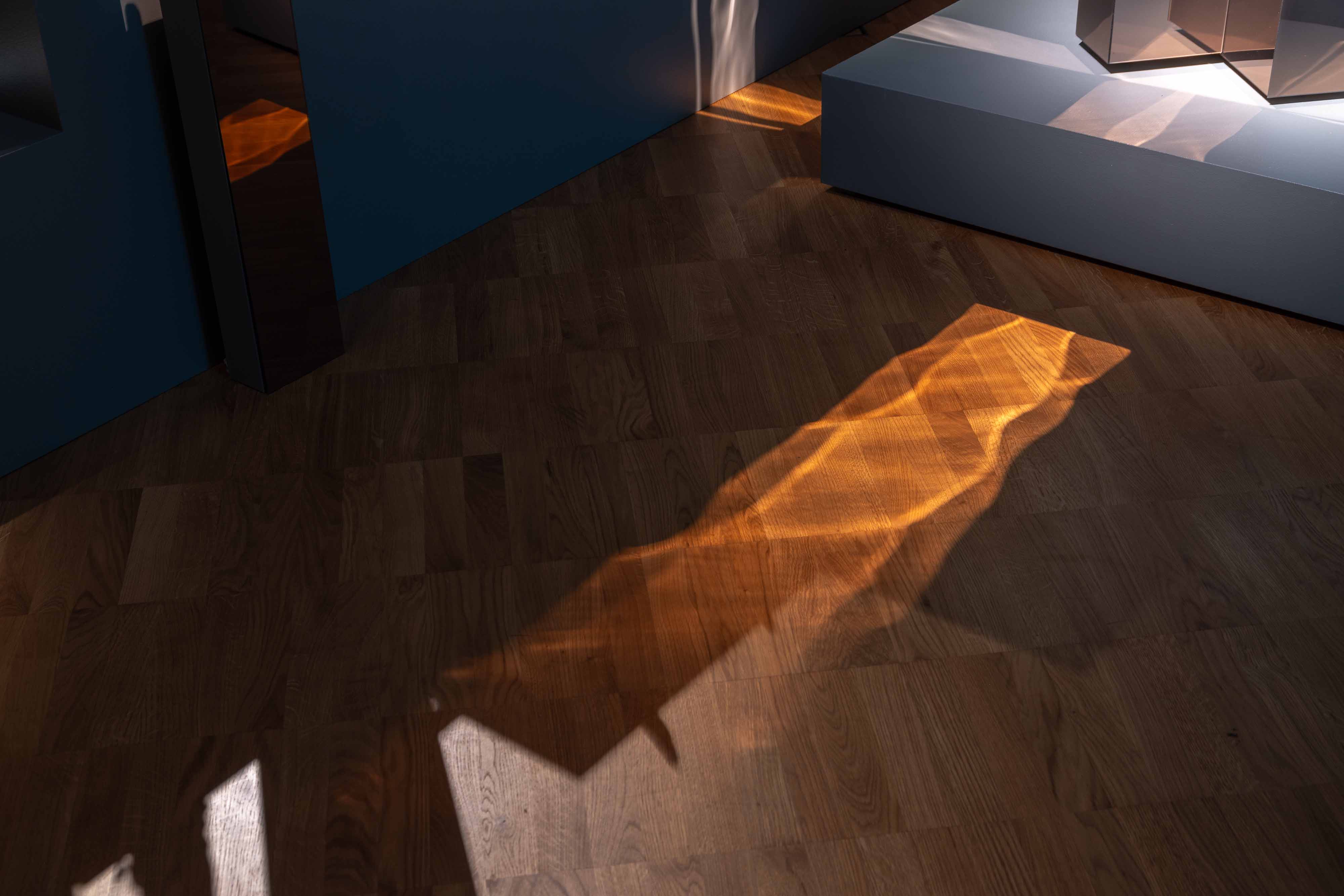



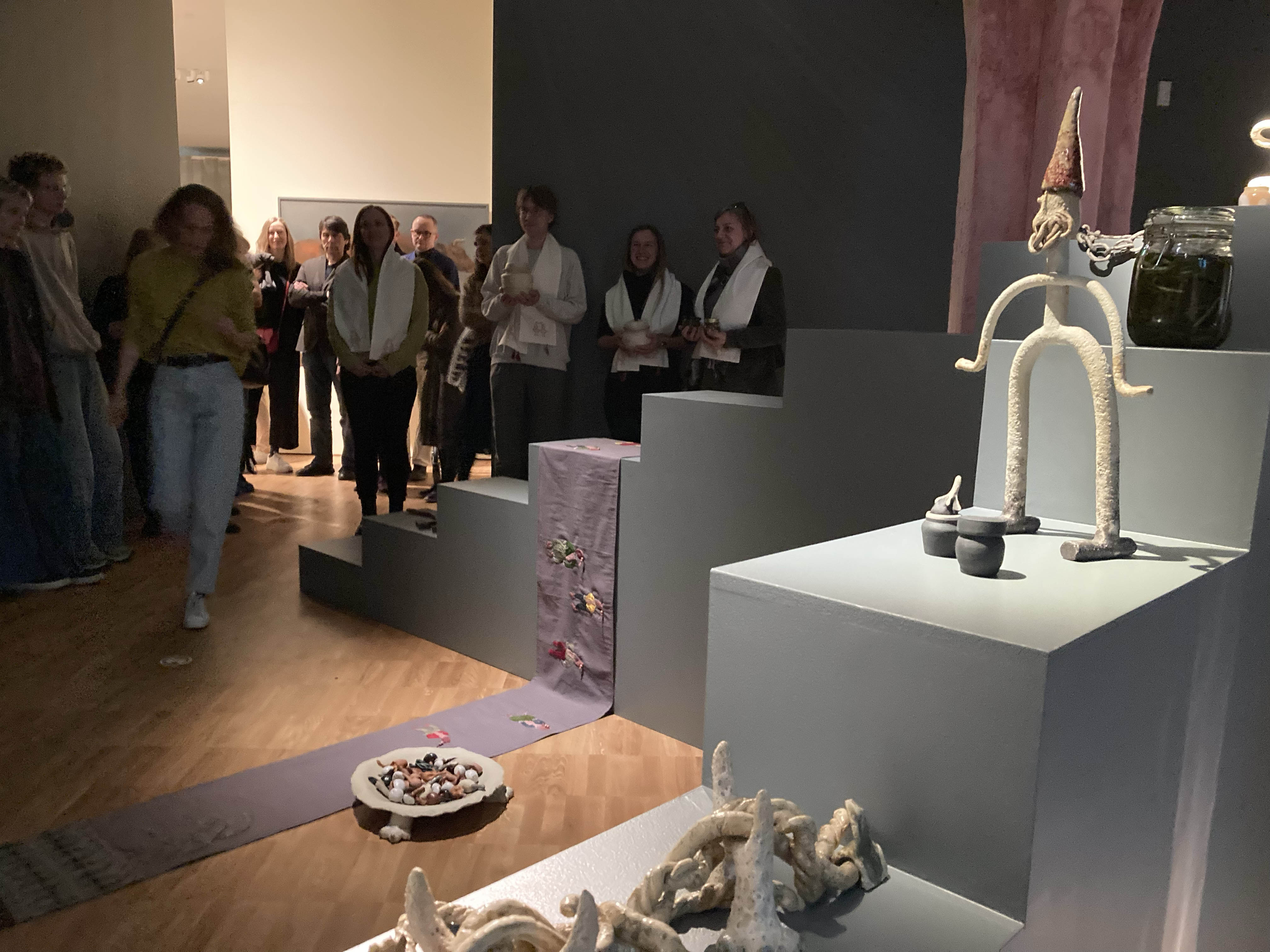
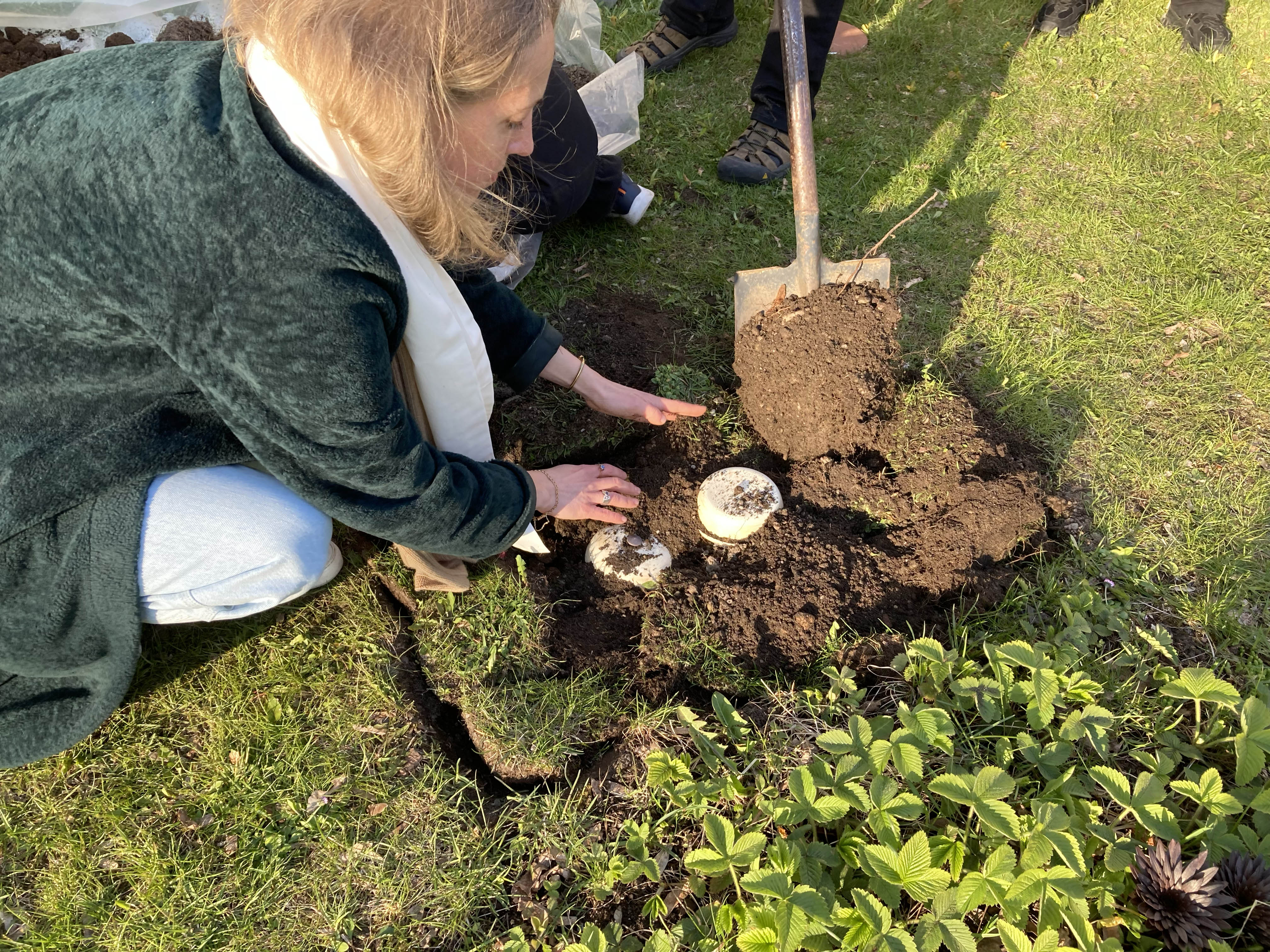
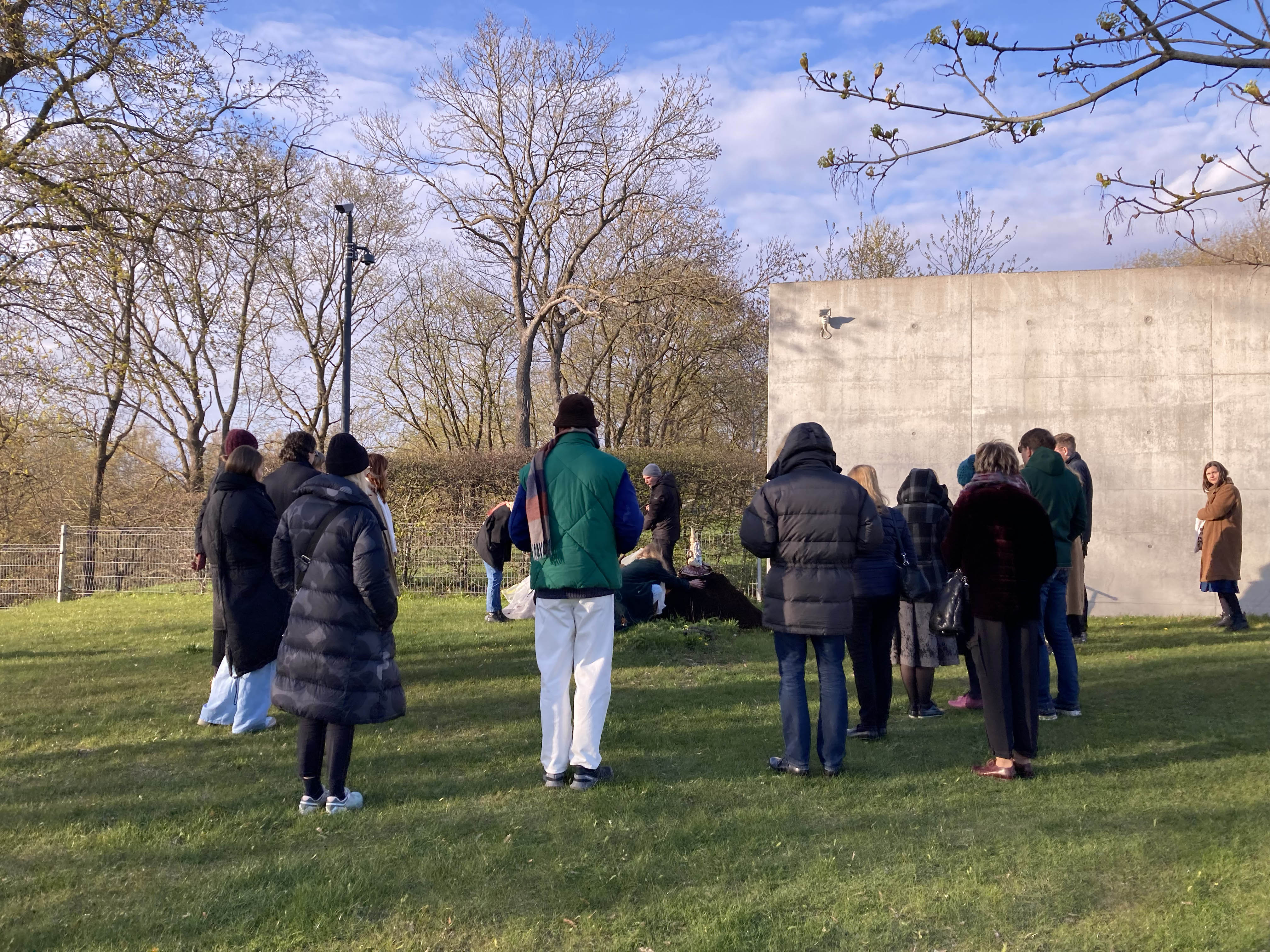
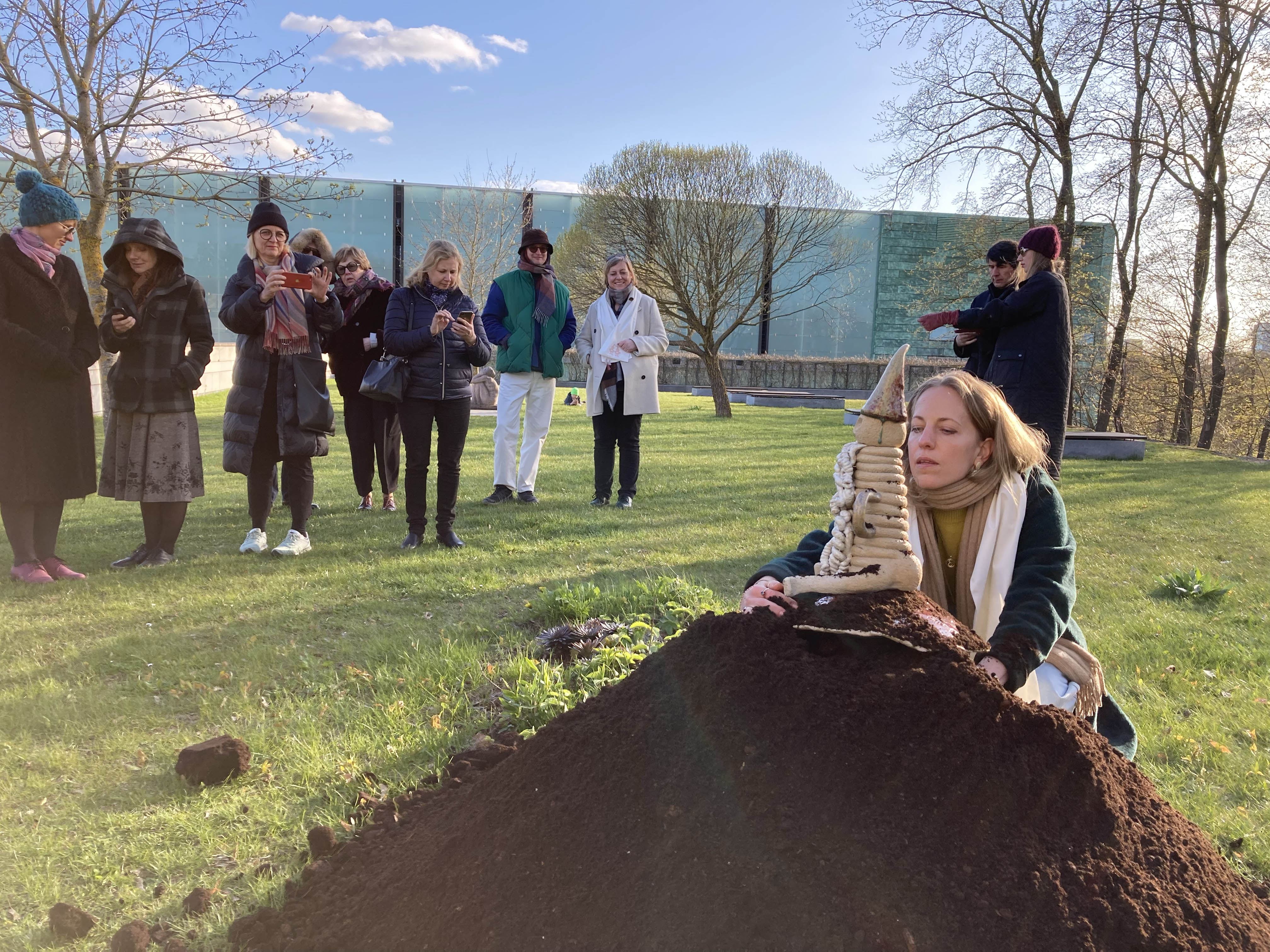

However, the process of beingdwarfed also has a pinch of brutality, nastiness and maybe even horror. The fictional remnants presented as museum relics can tell us their story if we let imagination lead theway. In Kumu courtyard stand more gnomes, like X that marks the spot – indicating where food is buried and fermenting underground. Many of the objects in the installation are made using traditional techniques: foraged wild foods, pet fur for weaving, burying food as a form of refrigeration; not only to preserve the techniques but as a way of re-learning and re-introducing them into the contemporary. As often in the Anthropocene, remembering tribal and ancient crafts and techniques is perceived as a solution. Creating new narratives from a blend of old and new, suggesting a future direction where both can cohabit. It is important to the artist that the installation would be accessible to visitors. Jokhova is inviting people to climb the stairs and interact with it, to be part of the blessed and ancient dwarfing ritual, suggesting a space where communities gather.
Text by Tiiu Saadoja and Ulrike Plath











Image credits Joosep Kivimae
